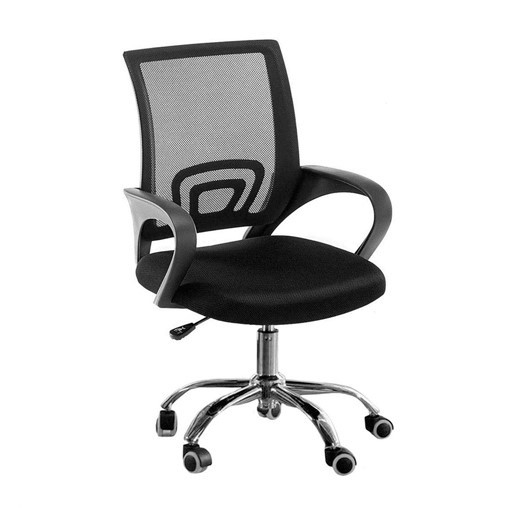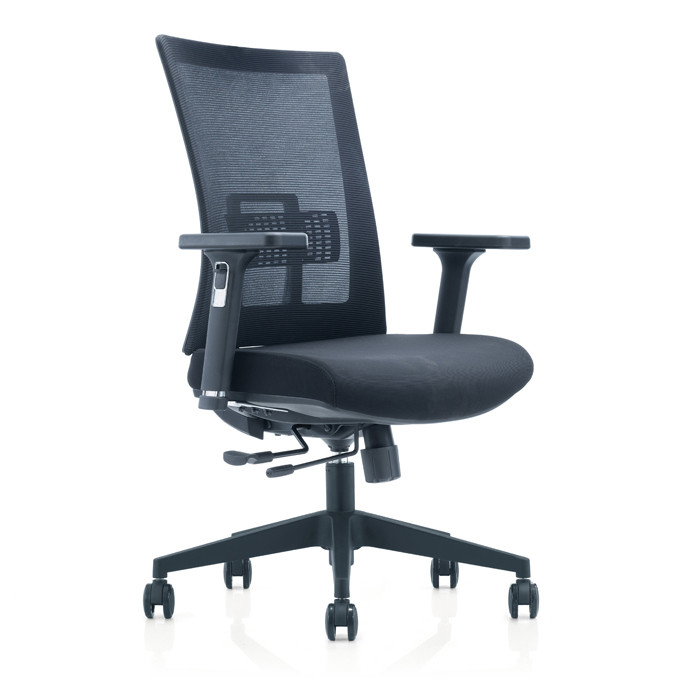
Top Office Chairs That Complement Wooden Desks
Introduction
Wooden desks bring an organic and grounded aesthetic to the workplace, whether it's a classic walnut executive desk or a minimalist oak table. However, pairing them with the wrong office chair can throw off the balance. The key is finding a chair that complements the grain, tone, and presence of wood without clashing or feeling out of place. This article explores the visual and functional features to consider when selecting an office chair that works in harmony with wooden desks—whether you're designing a home office or outfitting a professional space.
1. Tone Matching for Visual Harmony
When pairing a chair with a wooden desk, tone is key. Lighter woods such as ash or maple pair well with neutral-toned chairs, like grey or soft beige. Darker woods such as walnut or mahogany often complement deeper chair colors like charcoal or black. Matching tones help unify the workspace visually without overwhelming it.
2. Soft Material Contrast
Wood has a distinct texture and weight. To create balance, opt for chairs with fabric or mesh backs, which add softness and breathability to the overall look. Mesh especially helps create contrast while allowing the warmth of the wood to remain the focal point.
3. Avoid Overly Glossy Finishes
Most wood finishes are matte or satin. Chairs with high-gloss finishes or overly synthetic appearances can feel out of place. Opt for matte or low-sheen materials in your office chair to align with the organic presence of wood.
4. Compact Base Design
Wooden desks often have sculptural legs or classic drawer sections. A compact chair base ensures that these design elements aren’t blocked. Five-star caster bases with a narrow profile allow better flow and visibility of your wooden desk features.
5. Earth-Tone or Neutral Colors
Choosing a chair in an earth-tone palette ensures visual continuity with your wooden desk. Colors like taupe, cream, soft grey, or deep green harmonize well. If your desk is a focal point, keep the chair visually subtle so the wood remains dominant.
6. Frame and Armrest Synergy
Consider how the chair’s frame and armrests interact with the desk material. Chairs with black or dark grey arms can match well with darker desks, while light-colored or metallic arms offer a nice balance with oak or beech wood tones.
7. Simple, Clean Profiles
Wood furniture tends to have natural elegance, so avoid overly technical or industrial-looking chairs. Opt for clean, minimalist forms without excessive mechanical detail. This creates a cohesive look with timeless wooden pieces.
8. Comfort Without Overstuffing
Wood desks often lean traditional or sophisticated. Bulky or heavily padded chairs can clash with this aesthetic. Choose ergonomic chairs that offer support with a slim profile. A thinner silhouette maintains balance with the wood's sleek finish.
9. Casters That Glide Smoothly
Wooden floors often accompany wooden desks. Make sure the office chair includes soft or rubberized casters that protect the floor and glide quietly. This functional detail ensures daily use doesn't damage the ambiance—or the flooring.
10. Adjustable But Unobtrusive
Your chair needs to offer ergonomic adjustability, but it shouldn’t disrupt the overall design. Go for models where height, tilt, and lumbar support are integrated subtly, so the chair still looks refined next to a statement wooden desk.
Additional Considerations When Pairing with Wooden Desks
11. Blending Traditional and Modern Elements
Some wooden desks have classic or vintage characteristics. If that’s the case, blend in a modern chair with simple lines to create contrast and freshness. A well-matched pairing can balance tradition with a touch of modern flair.
12. Highlighting Natural Light
Wood reacts beautifully to natural light. A chair with breathable materials like mesh and light colors will allow sunlight to flow around the room, emphasizing the desk's natural grain rather than competing with it.
13. Emphasizing Texture Layers
The visual depth of wood can be accentuated by pairing it with chairs that offer subtle texture—mesh backs, woven fabric seats, or textured matte finishes. These add interest without disrupting the clean elegance of your desk.
14. Coordinated Workspace Accessories
To fully integrate your chair and desk, choose accessories—like a desk mat or footrest—that bridge the tones between wood and your chair. This helps create a seamless transition across all elements of the workspace.
15. Supporting Daily Use Comfort
While wooden desks give the room character, your comfort depends on the chair. Look for lumbar support, breathability, and flexibility to keep posture aligned, especially if you spend long hours at your desk.
16. Reflecting the Desk’s Purpose
Is your wooden desk a minimalist slab for creative work, or a grand executive piece? Match the chair accordingly. A low-profile mesh chair might be perfect for creative spaces, while a subtly bold ergonomic chair suits a more formal office.
17. Prioritizing Space Efficiency
If your desk has storage or drawers underneath, ensure your chair tucks in easily. Look for models with adjustable armrests or compact widths that accommodate tight spaces without bumping or scratching wood surfaces.
18. Sound Absorption and Acoustics
Wooden furniture tends to create a more echo-prone environment. Choosing a chair with fabric or mesh elements can help absorb sound and reduce office noise levels, enhancing focus and calm.
19. Long-Term Durability
A wooden desk is a long-term investment—your chair should be too. Focus on quality materials, sturdy construction, and a timeless design that won’t feel outdated after a year or two of use.
20. A Unified Aesthetic Vision
Finally, the best pairings come from a unified vision. Whether you're leaning rustic, Scandinavian, or industrial-chic, choose a chair that doesn't just match the desk—but completes the overall look of your workspace.
Recommended Products

-
Dibon Mesh Chair for Office and Home
This breathable mesh chair offers ergonomic support with a slim profile that fits beautifully alongside lighter wooden desks or modern setups. Its matte black frame complements both natural and painted wood finishes.
-
Sujaan Mesh Low Back Ergonomic Chair
Designed with a low back and refined silhouette, this chair brings comfort without overpowering your desk. Perfect for compact or open spaces, especially those with warm wood tones.
Final Thoughts
Pairing the right office chair with your wooden desk goes beyond visual appeal—it’s about finding balance. A thoughtful chair choice enhances not just your comfort, but the atmosphere of the entire room. Whether your space is rooted in tradition or leans contemporary, choosing a sleek, ergonomic chair with material harmony and tone balance can turn your workstation into a visually cohesive and highly functional environment.
Frequently Asked Questions
Q1: What color chair goes best with a walnut desk?
Dark greys, black, and deep charcoal tones often work best with walnut. They complement the richness of the wood without overshadowing it.Q2: Are mesh chairs a good match for classic wooden desks?
Yes, especially when the desk has a heavy or traditional profile. Mesh adds a modern contrast and keeps the overall space feeling light.Q3: How do I protect my wooden floor from chair casters?
Use soft rubber or polyurethane casters and consider a protective chair mat if the area sees high use.Q4: Should the chair match the desk exactly in color?
Not necessarily. Complementary tones and contrast can be more visually appealing than an exact match.


